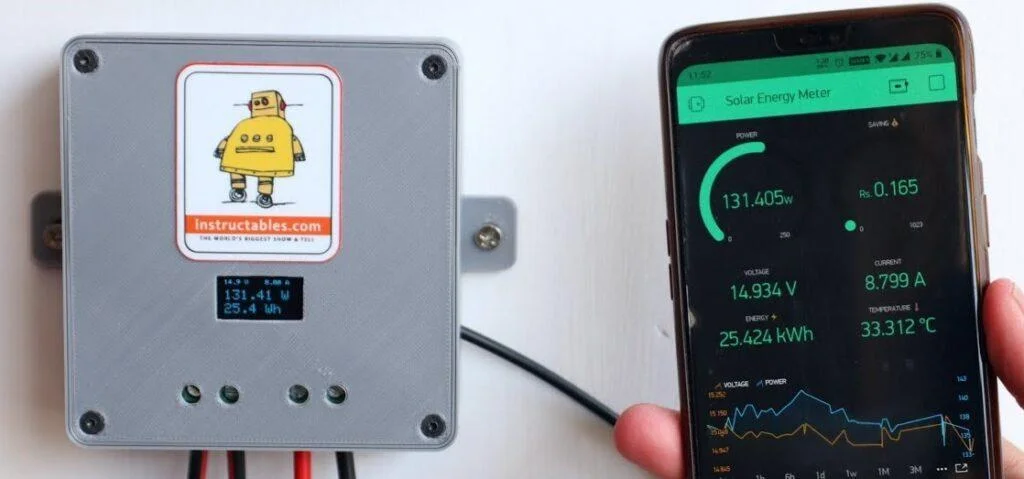Contents
Why is Monitor Solar Panel Output Necessary?
Monitor solar panel output the importance of monitoring solar panel output cannot be overstated, as it serves a multitude of critical purposes within the realm of solar energy systems. These systems represent substantial investments that necessitate diligent upkeep and fine-tuning to secure their maximum efficiency and returns. Monitor solar panel output plays an indispensable role by offering real-time insights into the operational performance of your solar array.
It not only provides a detailed window into how well your system is currently functioning but also serves as an early warning system, promptly alerting you to any potential issues that might surface. Here’s a comprehensive look at the significance of solar panel output monitoring and why it is an indispensable component of any solar energy endeavor.

Pros of Monitoring Solar Panel Output:
Monitor solar panel output is instrumental in reaping an array of comprehensive advantages that underscore the significance of this practice:
1. Optimization: Monitor solar panel output provides you with the invaluable ability to fine-tune your system. By tracking performance metrics, you can make informed decisions to optimize the tilt, orientation, or cleaning schedule of your panels. This, in turn, maximizes energy production and ultimately results in a higher energy yield. Through these optimizations, you can potentially unlock increased savings over the lifespan of your solar installation.
2. Performance Assurance: Consistent monitoring serves as a guarantee that your solar panels are functioning as anticipated. In the event of any noticeable drop in output, you can promptly address the issue, thus averting prolonged periods of inefficiency. This vigilant approach ensures that your solar system consistently delivers on its energy production potential.
3. Early Issue Detection: Monitor solar panel output is an early warning system, swiftly identifying any problems that may arise. Whether it’s a faulty panel, shading caused by nearby structures, or a malfunctioning component, early detection is key. Timely interventions, guided by monitoring data, can prevent protracted periods of downtime and mitigate any potential revenue loss.
4. Data-Driven Decisions: Monitoring solar panel output is a treasure trove of historical data. By meticulously analyzing this information, you can make data-driven decisions regarding your energy consumption patterns. This empowers you to implement more effective energy management strategies, leading to substantial cost savings and greater control over your energy usage.
5. Warranty Protection: Many solar panel manufacturers require evidence of regular maintenance and monitoring to uphold warranty agreements. By actively monitoring your solar panels, you ensure compliance with these warranty terms, thus safeguarding your investment. In the event of any unforeseen issues, this evidence serves as vital protection and support in any potential warranty claims.
By embracing solar panel monitoring, you position yourself to harness these multifaceted benefits, which extend from optimization and performance assurance to early issue detection, data-driven decision-making, and the protection of your solar investment through warranty compliance.
Cons of Monitor Solar Panel Output:
- Initial Setup: The commencement of a monitoring system often entails an initial investment of both time and occasionally financial resources. While this step may appear as an early cost, it’s essential to recognize that the long-term advantages substantially surpass these initial considerations.
- Technical Proficiency: Depending on the complexity of your chosen monitoring system, it might necessitate a degree of technical proficiency to fully comprehend the monitoring software or apps. However, it is worth noting that numerous systems today offer intuitively designed and user-friendly interfaces, thereby making the process more accessible to a wider range of users.
- Data Management: The management of data is a crucial aspect of any monitoring system. It is important to be mindful that excessive monitoring, without clearly defined objectives, can result in data overload. To maximize the utility of your monitoring efforts, it is prudent to concentrate on the specific metrics that align with your unique objectives and goals. By doing so, you can effectively channel your data analysis efforts, ensuring that you obtain the most meaningful and actionable insights from your monitor solar panel output system.
Benefits of Monitoring Solar Panel Output:
- Cost Savings: One of the paramount advantages of optimizing energy production through efficient monitoring is the potential for significant cost savings. By fine-tuning your solar energy system, you have the opportunity to curtail your electricity expenses, ultimately resulting in lower electricity bills. Over time, these financial savings can significantly augment the return on your initial investment in the solar system, making the venture more financially sustainable and appealing.
- Environmental Impact: The environmental benefits of efficient solar energy generation cannot be overstated. By maximizing the performance of your solar panels, you contribute to a substantial reduction in the reliance on finite and polluting fossil fuels. This shift towards cleaner energy not only advances your energy independence but also has a direct and positive impact on the environment. Through this reduction in carbon emissions, your solar energy efforts become a crucial part of the broader movement towards a more sustainable and greener planet.
- Performance Tracking: Monitor solar panel output system offers more than just practical benefits; it also provides a tangible and engaging means to track the impact of your renewable energy efforts. This fosters a sense of involvement and pride in your eco-conscious endeavors. By closely observing the performance of your solar panels and witnessing the positive influence they have on energy generation, you can develop a deeper connection to the environmental cause, underscoring the personal satisfaction and achievement that come with contributing to a greener and more sustainable world.
Easy Way to Monitor Solar Panel Output:
Monitoring the output of your solar panels has become more accessible than ever, primarily through the utilization of dedicated monitoring applications or platforms offered by your solar panel manufacturer or installer. This process can be simplified into the following comprehensive steps for monitor solar panel output:
1. Check Equipment: The first step involves verifying whether your solar panels are equipped with monitoring capabilities. In contemporary solar systems, this feature is often integrated as built-in monitoring hardware, ensuring you have the foundation for data collection.
2. Download App: Access your device’s app store and search for the official monitoring application provided by the solar panel manufacturer or installer. Download and install the app on your device to begin the setup process.
3. Set Up Account: Within the app, initiate the process by creating an account, following the guidance and instructions provided. If you already possess an account, you can seamlessly log in to proceed.
4. Connect System: The app will provide detailed instructions on how to connect your solar panel system to the monitoring platform. Typically, this step entails inputting your system’s unique identifier or serial number to establish a connection.
5. Access Real-Time Data: Once the system is successfully connected, the app will offer real-time data on your solar panel output. This includes essential metrics like energy production, consumption, and other relevant performance indicators.
6. Explore Historical Data: The app often features the functionality to access historical data, granting you insights into your solar system’s performance over various timeframes. This can be invaluable in assessing long-term efficiency and making informed decisions.
7. Set Alerts (Optional): Some monitoring apps allow you to configure alerts for irregular or suboptimal system performance. These alerts serve as proactive tools, keeping you informed of any issues that may arise.
8. Regular Check-ins: Establish a routine of regularly checking your app to monitor solar panel output. This practice ensures that your system is consistently running at its best, and you can take timely action should any concerns or irregularities surface.
By following this comprehensive process, you can harness the power of dedicated monitoring apps to actively engage with and optimize the performance of your monitor solar panel output system, ultimately maximizing your investment in clean, renewable energy.
Conclusion
In conclusion, Monitor solar panel output is crucial to vigilantly monitor the output of your solar panels if you want your solar energy system to function optimally and efficiently. Utilizing state-of-the-art technology and real-time data is paramount in this context, as it empowers you to make decisive and well-informed decisions. This not only guarantees the effectiveness of your solar installation but also enables you to fully capitalize on the wide range of benefits that come with investing in renewable energy. By systematically tracking and analyzing your system’s performance, you will be able to extract the maximum value from your solar array and thereby contribute to a more sustainable and cost-effective energy landscape.
